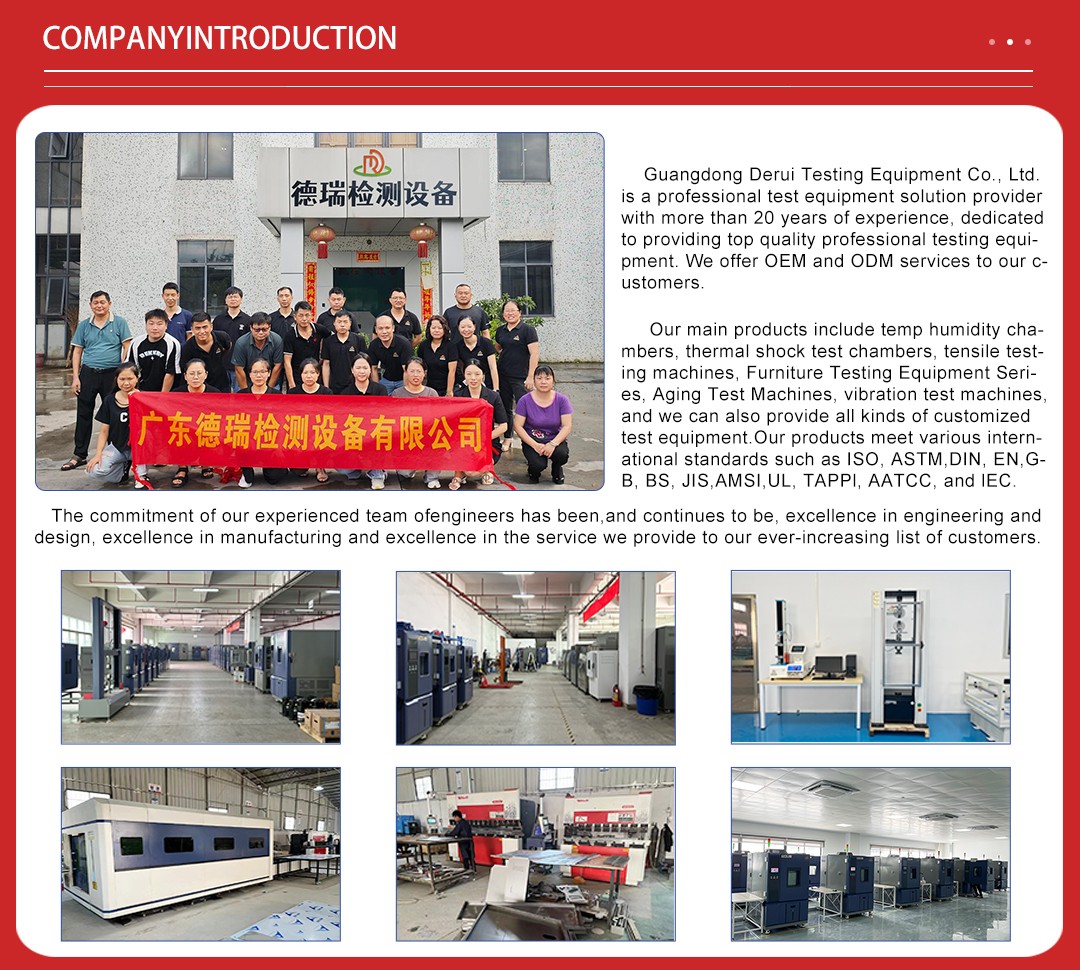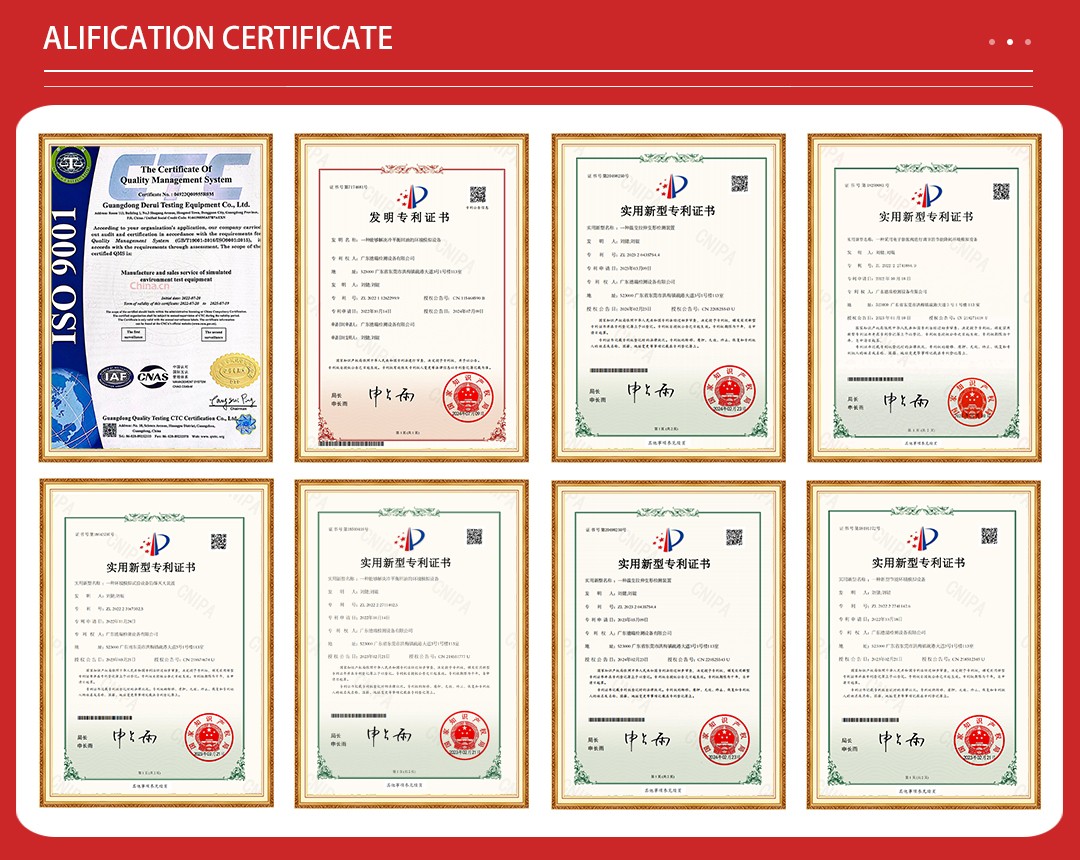
Electronic Product Environmental Test Chamber is an essential piece of equipment used to simulate various environmental conditions to assess the durability, performance, and reliability of electronic ...

Electronic Product Environmental Test Chamber is an essential piece of equipment used to simulate various environmental conditions to assess the durability, performance, and reliability of electronic products. These chambers are used to expose products to a range of environmental factors such as temperature, humidity, vibration, dust, and other stress factors that could potentially impact their performance during manufacturing, transportation, and usage. By recreating real-world scenarios, these chambers help manufacturers, engineers, and researchers ensure that electronic products can withstand a variety of harsh conditions without compromising functionality.

1. Temperature Control:
The chamber provides precise temperature control to simulate extreme conditions, ranging from freezing cold to intense heat. Typically, the temperature range can vary from as low as -70°C to as high as 180°C, depending on the chamber specifications. These temperature extremes allow for testing of the product’s performance and stability in various climates, including those encountered in transportation and outdoor use.
Humidity is another critical environmental factor that can affect the performance of electronic products. Environmental test chambers can control the humidity level within the chamber, often ranging from 10% to 98%. This is particularly important when testing electronic devices for moisture sensitivity, corrosion resistance, and ensuring the integrity of components under high humidity conditions.
Some advanced environmental test chambers come equipped with vibration and shock simulation features. These are used to test the resilience of electronic products to vibrations and mechanical shocks that may occur during shipping, handling, or everyday use. For example, products such as smartphones, laptops, and automotive electronics are often subjected to vibration tests to ensure they can withstand the rigors of transport and operation in dynamic environments.
Dust and salt fog exposure is an essential test for electronics that will be used in harsh outdoor environments, like automotive or military applications. The chamber can simulate dusty or salty environments, ensuring the product's performance remains stable and preventing issues such as corrosion or electrical failure when exposed to these conditions.
One of the significant advantages of modern environmental test chambers is their ability to be programmed with customized testing profiles. Engineers and researchers can program specific temperature, humidity, and time cycles to simulate different environmental scenarios, including rapid temperature changes (thermal shock) and continuous environmental exposure for extended periods.
Most environmental test chambers are equipped with sophisticated monitoring systems that provide real-time data logging. These systems capture data such as temperature, humidity, pressure, and vibration levels, which can be reviewed and analyzed to identify potential weaknesses or failure points in the tested products. This feature is crucial for conducting repeatable tests and ensuring consistency.

1. Product Development and Prototyping:
During the development phase of electronic products, engineers rely on environmental test chambers to simulate the various conditions that the product will face in real-world applications. By subjecting prototypes to extreme temperatures, humidity, or mechanical stress, manufacturers can identify design flaws or potential issues before mass production begins.
Reliability testing is essential to ensure that electronic products will perform over their intended lifespan, even under challenging conditions. Products such as consumer electronics, automotive systems, and industrial equipment undergo extensive environmental testing to ensure they function properly over time. Test chambers help predict the product’s longevity by simulating years of exposure to various environmental factors in a compressed time frame.
Environmental test chambers are also employed in the quality control process to ensure that each batch of products meets the required standards. By testing products in a controlled environment, manufacturers can ensure that each unit functions reliably, meets safety requirements, and adheres to industry standards such as those set by UL (Underwriters Laboratories), IEC (International Electrotechnical Commission), or other regulatory bodies.
For manufacturers of electronic components such as semiconductors, circuit boards, and batteries, environmental test chambers provide an essential tool for testing individual parts that may not yet be integrated into finished products. These components are exposed to various environmental stress tests to ensure their reliability when incorporated into larger systems.
Long-term durability testing is an important aspect of product evaluation, especially for devices intended for use in extreme environments (e.g., aerospace, automotive, military). Environmental test chambers allow for accelerated testing of products to simulate months or even years of use in just a few days or weeks. Stress tests that simulate repeated thermal cycles, humidity exposure, or vibration help identify weaknesses in a product's design, materials, or assembly process.
Many industries, especially those involving electronics, must comply with environmental standards that dictate how products should perform in specific conditions. These standards often include temperature and humidity requirements, vibration resistance, and other environmental conditions. Environmental test chambers help manufacturers ensure their products meet these regulatory standards and gain certification for sale in global markets.

Model | DR-H201-100 | DR-H201-150 | DR-H201-225 | DR-H201-408 | DR-H201-1000 | |
Internal Dimension (W*H*D) | 500*500*400mm | 500*500*600mm | 600*750*500mm | 600*850*800mm | 1000*1000*1000mm | |
External Dimension (paint Type) (W*H*D) | 750*1536*1310mm | 750*1636*1410mm | 850*1786*1410mm | 850*1890*1710mm | 1250*2066*1910mm | |
Temperature(℃) | -20/-40/-70 | -20/-40/-70 | -20/-40/-70 | -20/-40/-70 | -20/-40/-70 | |
Total Power(kw) | 4.5/4.5/6.5 | 5/5/6.5 | 9.5/9.5/11.6 | 9.5/9.5/11.6 | 17/17/21.5 | |
Maximum Current(A) | 25/25/32 | 32/32/40 | 25/32/40 | 25/32/40 | 50/50/60 | |
Voltage(A) | Sigle Phase 220V | Sigle Phase 220V | Three Phase 380V | Three Phase 380V | Three Phase 380V | |
Performane | Temp.& Humi. Adjust Way | Balanced temperature and humidity control (BTHC) PID intelligent adjustment | ||||
Temperature range | -20℃,-40℃,-70℃~150℃ | |||||
Temperature accuracy | 0.01℃ | |||||
Temperature tolerance | ≤±1.0℃ or ±2.0℃ | |||||
Temperature fluctuations | ≤±0.5℃ (without load and temperature stable) | |||||
Temperature uniformity | ≤1.5℃ (without loading), 50mm≤SENSOR | |||||
Humidity range | 20%-98%RH | |||||
Humidity accuracy | 0.1%RH | |||||
Humidity tolerance | 1 、≥75%RH:≤±3%RH ;2 、≤75%RH :≤±6%RH | |||||
Humidity fluctuations | ≤±2.5%RH | |||||
Heating rate | 3℃/min in average | |||||
Cooling rate | 1℃/min in average | |||||
Internal Chamber Material | Stainless Steel 304 | |||||
External Chamber Material | Stainless Steel steel of paint spray | |||||
| Cooling Method | Single stage compression, two stage compression | ||||
Refrigerator | Hermertically Sealed France Tecumseh Compressor or Semi-hermetic BOCK Compressor | |||||
Cooling Method | Air-cooled | |||||
| Operation Panel | Programmable LCD Touch Screen | ||||
Running Mode | Fix Running, Pattern Running | |||||
Program Memory Capacity | 120 Group Programmable, Max 100 Section Each | |||||
Output | Rs-232 (USB,Optional) | |||||
| Water Supply | Circulating Water | ||||
Water Tank Capacity | Chamber Internal Capacity < 800L: 25L X 1pc | |||||
The Electronic Product Environmental Test Chamber is a cornerstone of modern electronic manufacturing and product development. By providing a controlled environment that simulates a wide range of real-world conditions, these chambers help ensure that electronic products are durable, reliable, and safe for use in diverse environments. Whether for product development, quality control, or regulatory compliance, these chambers provide an invaluable tool for testing the performance of electronics and ensuring their longevity in challenging conditions. With continuous advancements in technology, environmental test chambers are becoming more sophisticated, efficient, and user-friendly, offering businesses an increasingly powerful way to ensure the quality and reliability of their products.


Not search wanted products